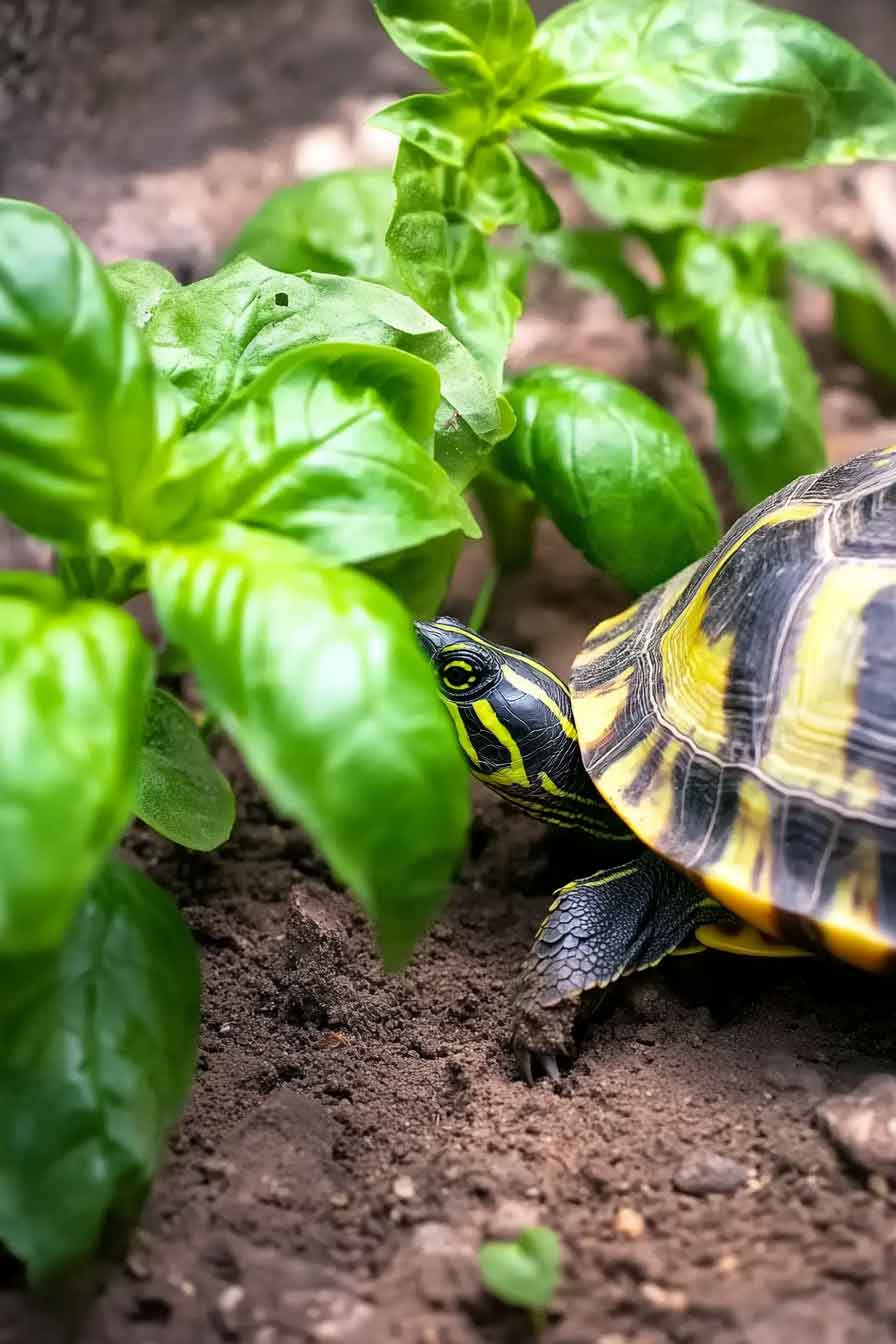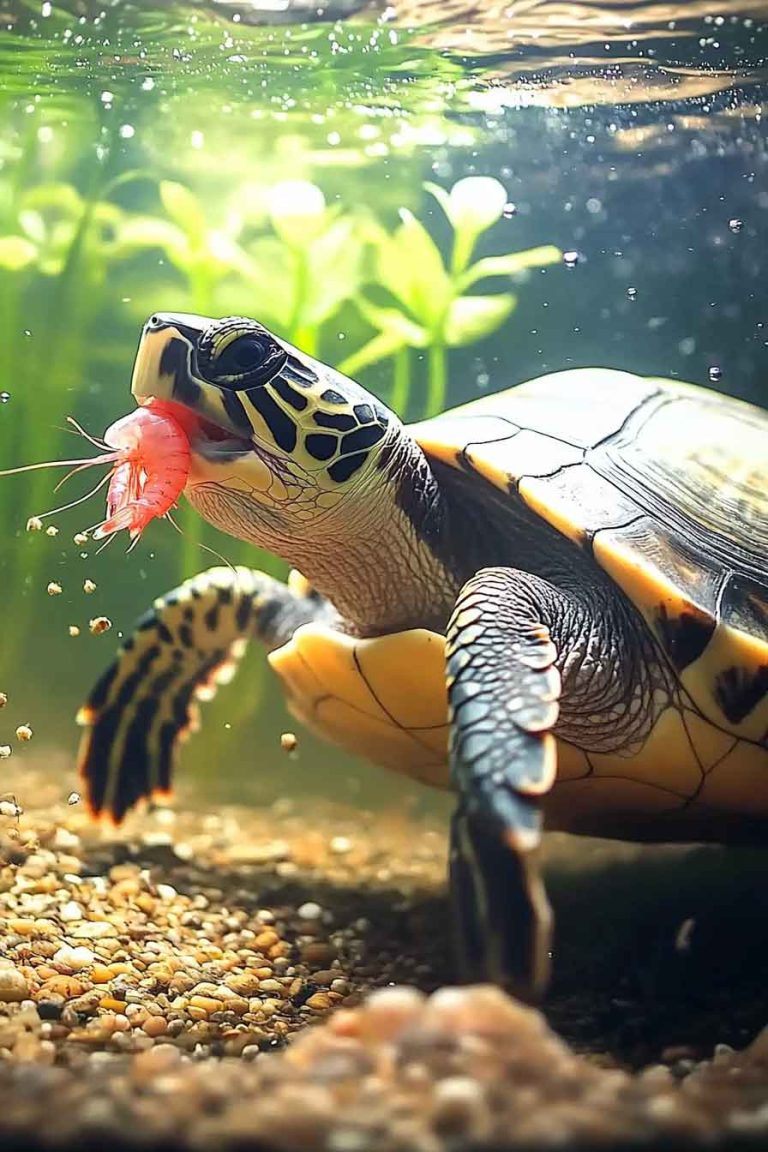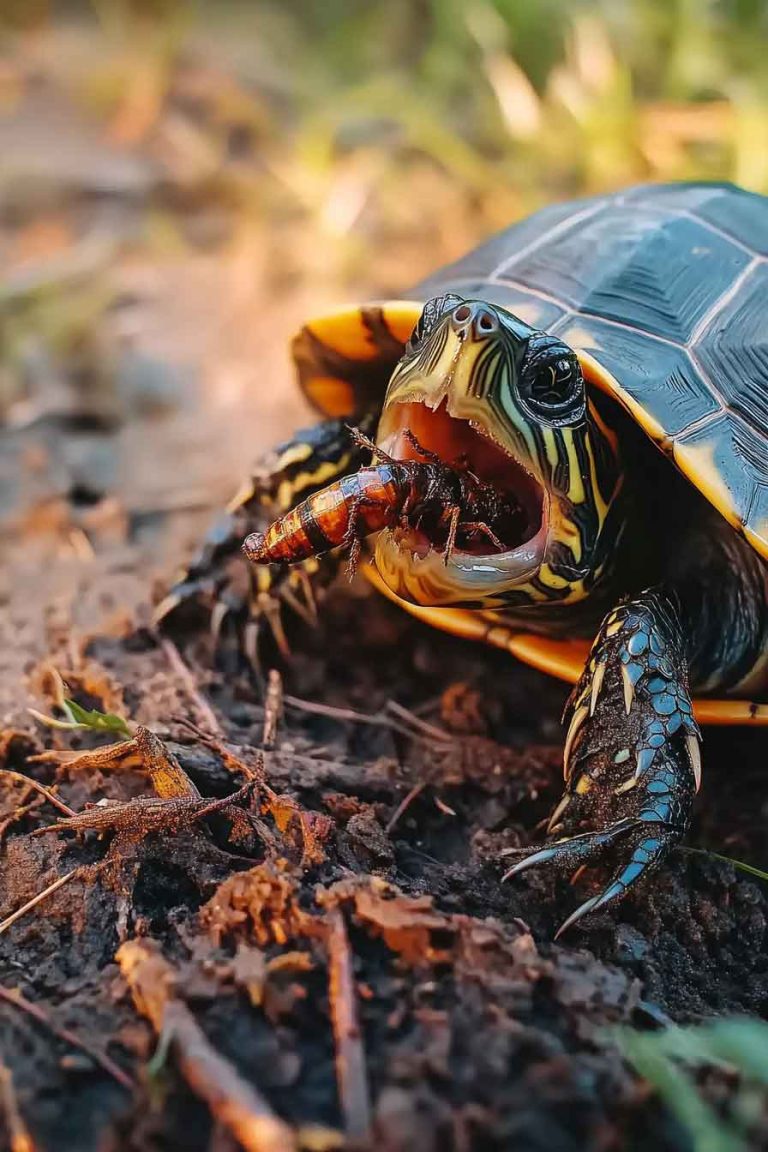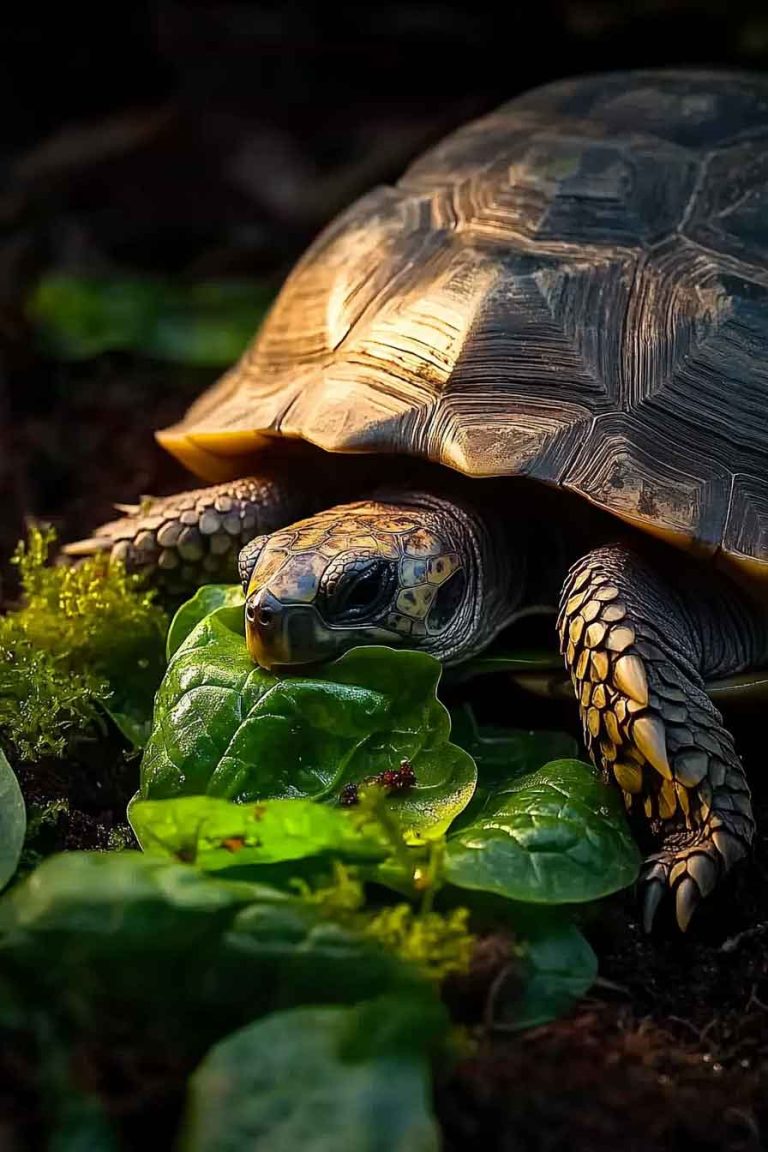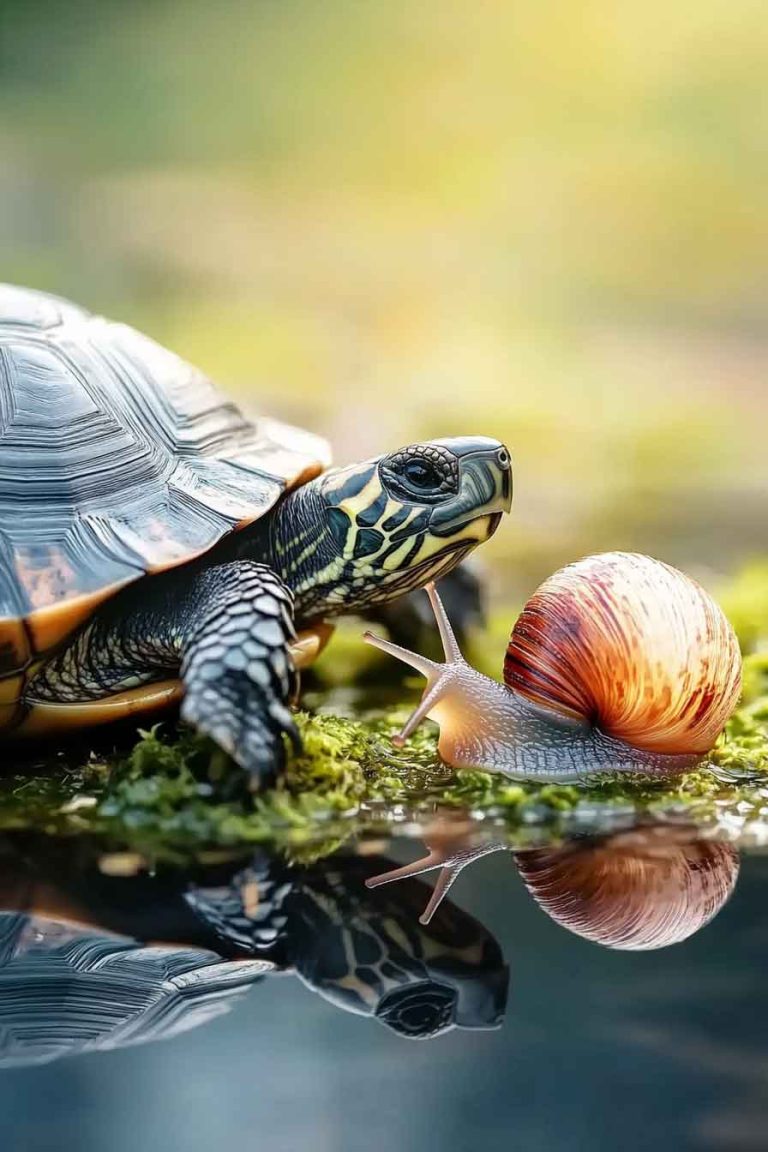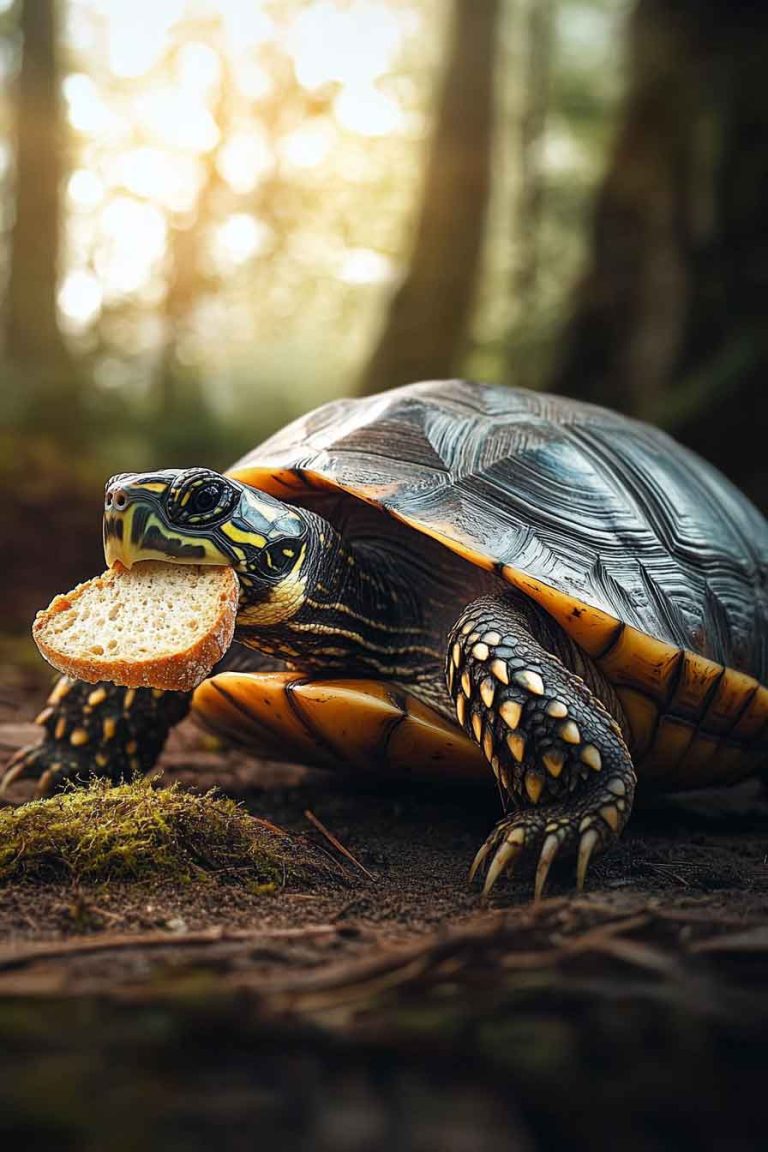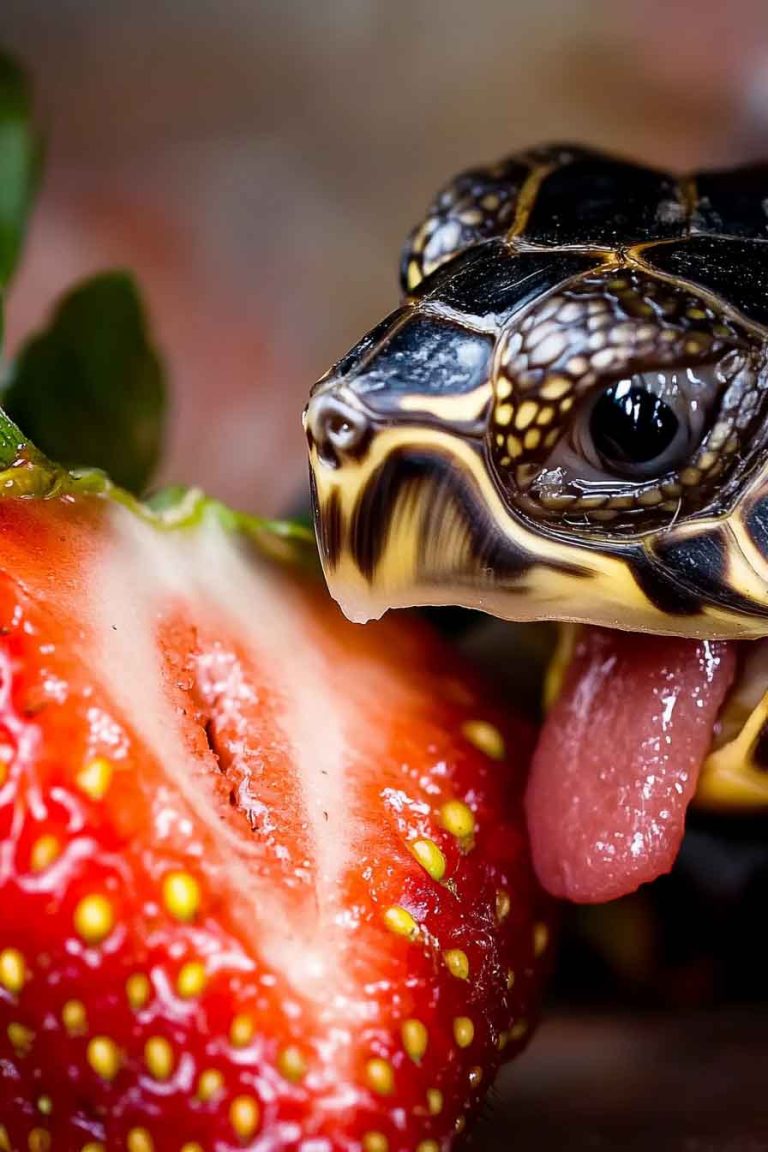Can Turtles Eat Basil? Safe Feeding Guide for Pet Owners
Hey there, fellow turtle parent!If you’re like me, you’ve probably looked at the fresh basil growing in your kitchen and thought, “Hmm, can I share a few leaves with my turtle?” I totally get it — we love our little reptiles and want to treat them to something green and tasty. So, can turtles eat…
Hey there, fellow turtle parent!
If you’re like me, you’ve probably looked at the fresh basil growing in your kitchen and thought, “Hmm, can I share a few leaves with my turtle?” I totally get it — we love our little reptiles and want to treat them to something green and tasty.
So, can turtles eat basil? The short answer is yes, turtles can eat basil — but only in small amounts and not too often. Basil isn’t toxic to turtles like onions or garlic, but that doesn’t mean it should be a regular part of their diet either.
In this blog post, I’m going to walk you through everything you need to know about feeding basil to turtles — the benefits, the risks, and how much is safe. Stick with me, and I’ll help you decide if basil is a good treat for your shelled friend.
Can You Feed Basil to Your Pet Turtle?
Yes, you can feed basil to your turtle — but think of it more like an occasional treat than a staple food. Just because it’s green doesn’t mean it’s always good in large amounts. While basil has some vitamins and antioxidants, it’s also high in essential oils and calcium, which can cause problems if overfed.
Personally, I’ve tried offering basil to my own turtle, and he nibbled on it a bit before going back to his usual leafy greens. Some turtles like it, and some don’t — just like us!
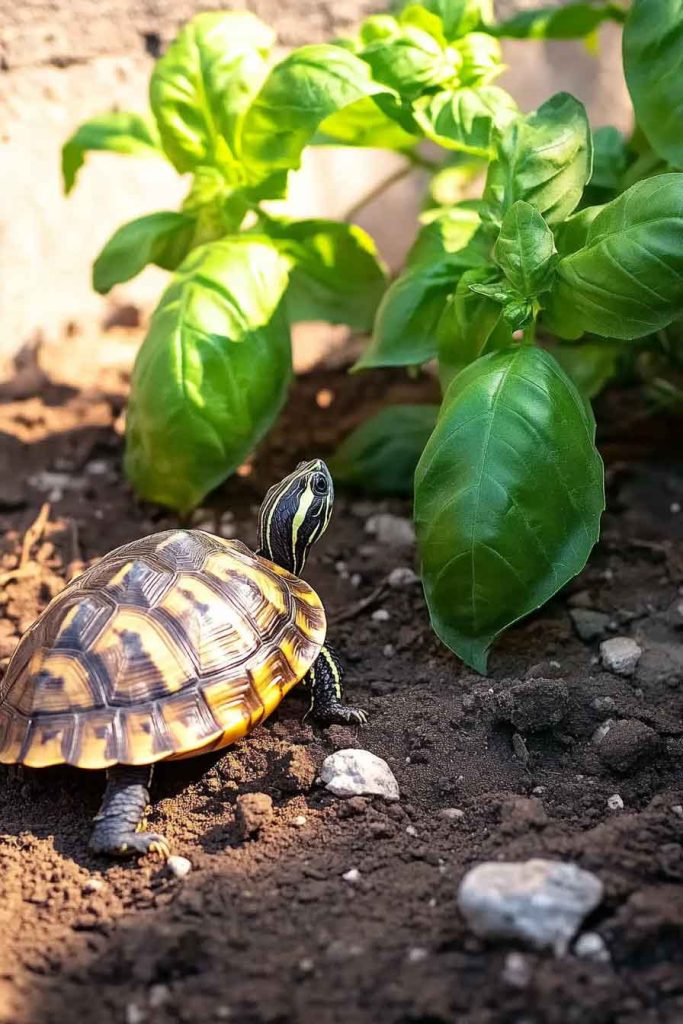
What’s Inside Basil? (Nutritional Breakdown)
Let’s take a quick look at what’s actually in basil. Here’s what 100 grams of fresh basil typically contains:
- Calcium: 177 mg
- Phosphorus: 56 mg
- Vitamin A: 264 mcg
- Vitamin K: 414.8 mcg
- Magnesium: 64 mg
- Iron: 3.17 mg
- Folate: 68 mcg
- Oxalates: Moderate to high levels
That high calcium level looks great, right? But hold on — turtles need the right balance between calcium and phosphorus, ideally a 2:1 ratio. With basil, that ratio is pretty high in calcium, which sounds good at first, but too much of it without balancing it out with other foods can actually backfire.
Also, basil has oxalates, and these can block calcium absorption in your turtle’s body. That means even though basil has calcium, your turtle might not be able to use it properly.
Do Turtles Like Basil?
Honestly, it depends on the turtle.
Some turtles might love basil’s strong smell and taste. Others might take a bite and walk away. My turtle? He gave it a sniff, took one bite, and moved on. If you want to try it, just offer a small piece and see how your turtle reacts. Never force it.

Health Risks of Feeding Too Much Basil to Turtles
Okay, let’s talk real talk. Basil sounds like a nice leafy green — but here’s where you need to be careful.
1. Oxalates and Calcium Blockage
Remember those oxalates I mentioned earlier? If your turtle eats a lot of basil (or other high-oxalate greens like spinach), those oxalates can bind with the calcium in their body. That leads to something called calcium deficiency, and that’s a serious problem. Turtles with low calcium can develop Metabolic Bone Disease — soft shells, weak bones, and even trouble walking.
2. Kidney Strain
Basil’s essential oils can stress your turtle’s kidneys if they eat it too often. Turtles aren’t built to handle strong herbs regularly. Their digestive systems are delicate, and basil’s volatile compounds might do more harm than good if overused.
3. Unbalanced Diet
If your turtle fills up on basil, they might skip out on other greens that actually should be the main part of their diet — like dandelion greens, romaine, collard greens, or escarole. We want a varied, healthy menu — not a picky eater who wants just basil leaves all day.
How Much Basil Can a Turtle Eat?
Alright, now let’s get into how much is actually safe.
I only give my turtle a few small leaves once a week — and that’s it. Basil should be treated as a treat, not a meal. If you’re feeding your turtle basil for the first time, just try one small leaf and see how they respond.
Here’s a general guideline I follow:
- Adult turtles: 1–2 small basil leaves once per week
- Baby turtles: Best to avoid — their diet needs to be extra controlled
Turtles need a mix of foods in their diet, especially if they’re herbivores or omnivores. Too much of one kind — especially something with strong oils like basil — isn’t healthy in the long run.
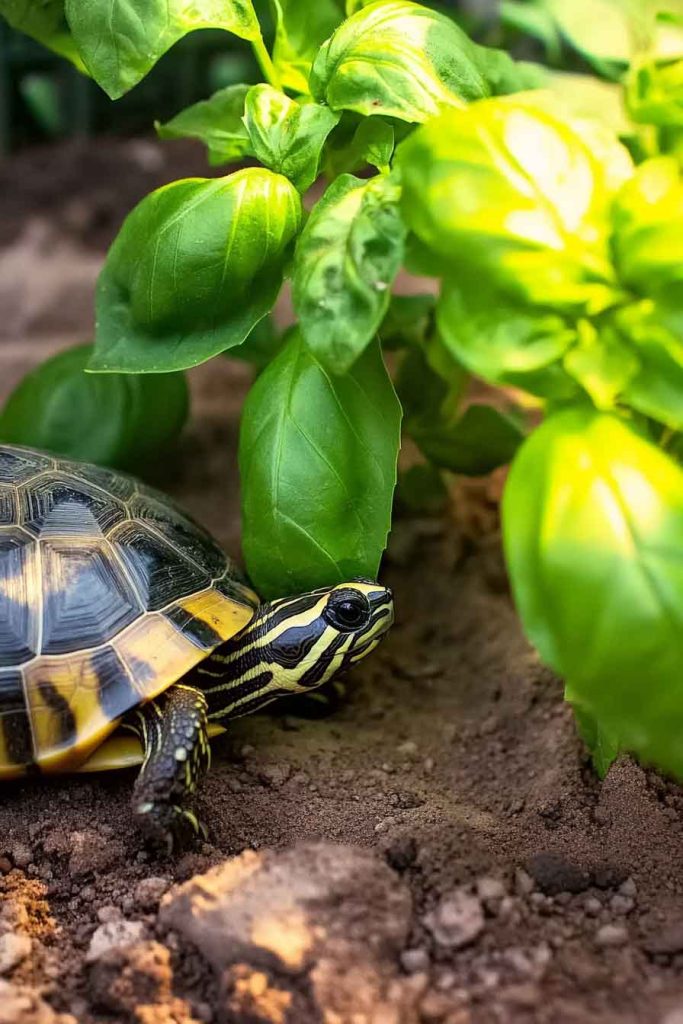
Can You Feed Basil to Baby Turtles?
I get asked this a lot — and my answer is always no for baby turtles. Their digestive systems are still developing, and they need very specific nutrition to grow strong shells and healthy bones.
Baby turtles need a diet rich in protein and calcium, and basil just doesn’t give them what they need. Plus, the oxalates in basil can really mess with their calcium absorption during those early stages of development.
So if your turtle is still little, stick to safe greens like romaine, dandelion, and calcium-rich veggies. Leave the basil for when they’re older — and even then, only in moderation.
Can Red-Eared Sliders Eat Basil?
Yes, red-eared sliders can eat basil — but again, just as a treat.
I have a friend who owns a red-eared slider, and she told me her turtle loves the smell of basil. But she only offers a leaf every now and then, mixed with other safe greens. That’s the way to go.
Red-eared sliders are omnivores, so they also eat insects and protein sources. If basil starts to replace their main food, they could end up missing key nutrients.
Can Box Turtles Eat Basil?
Box turtles are a bit different — they’re also omnivores but tend to eat more fruit and insects than aquatic turtles. Basil is still okay for them in very small amounts. I’d say no more than once every two weeks.
Too much basil for box turtles can lead to the same issues — digestive discomfort, calcium imbalance, and lack of dietary variety. Just sprinkle a leaf in their dish now and then. Don’t let basil become a habit.
Can Painted Turtles Eat Basil?
Painted turtles are more aquatic, and they typically don’t come across herbs like basil in the wild. That means it’s not a natural part of their diet, but they can try a small piece if they’re curious.
If you want to offer basil to a painted turtle, make sure it’s:
- Fresh
- Pesticide-free
- Given in tiny amounts
Again, the key is variety and moderation. Don’t replace their leafy greens or aquatic plants with basil.
Other Types of Basil: Are They Safe?
Basil comes in a few varieties — sweet basil, Thai basil, lemon basil, and even purple basil. Most of these are safe in small quantities, but they do have slightly different flavor profiles and oil content.
From my research and personal experience:
- Sweet basil is the safest and most common one to feed
- Thai basil and lemon basil have stronger oils — offer very sparingly
- Purple basil is okay too, but again, only as a rare treat
Always wash basil thoroughly, especially if you’re buying it from the store.
Frequently Asked Questions (FAQs)
Can turtles eat dried basil?
Nope — I wouldn’t recommend it. Dried basil has a much higher concentration of essential oils and loses most of its nutritional value. It’s also harder for turtles to digest. Stick to fresh basil only, and only in small amounts.
Can turtles eat basil stems?
A little stem is okay if it’s tender and soft, but I usually remove the thick stems. They’re a bit woody and not very digestible for turtles. Just tear off the soft leaves — it’s safer and easier for them to chew.
Is basil better than lettuce for turtles?
Not really. While basil has more flavor and some extra vitamins, it’s not meant to replace staple greens like romaine, red leaf, escarole, or dandelion greens. Those are better options for daily feeding. Think of basil as a flavorful bonus — not the main course.
What herbs can turtles eat safely?
Besides basil (in moderation), here are a few other herbs you can occasionally offer:
- Cilantro
- Parsley (rarely – it’s high in oxalates too)
- Dill
- Mint (small amounts only)
Just make sure to rotate their food and never rely on herbs alone.
Final Thoughts
So, can turtles eat basil? Yes — but only as a treat.
I give my turtle a couple of fresh basil leaves every now and then, just to mix things up and add a little variety to his diet. But I always make sure the rest of his meal is made up of safe, calcium-rich greens and the right balance of protein or aquatic plants.
Here’s the thing: turtles are sensitive creatures, and just because something is safe for us doesn’t mean it’s safe for them. That’s why I always double-check before offering anything new — and I hope this article helped you do the same!
If you’ve got basil growing in your kitchen or garden, feel free to let your turtle have a bite — but keep it occasional, keep it small, and keep it clean.
Thanks for reading, and give your turtle a gentle shell pat from me!

